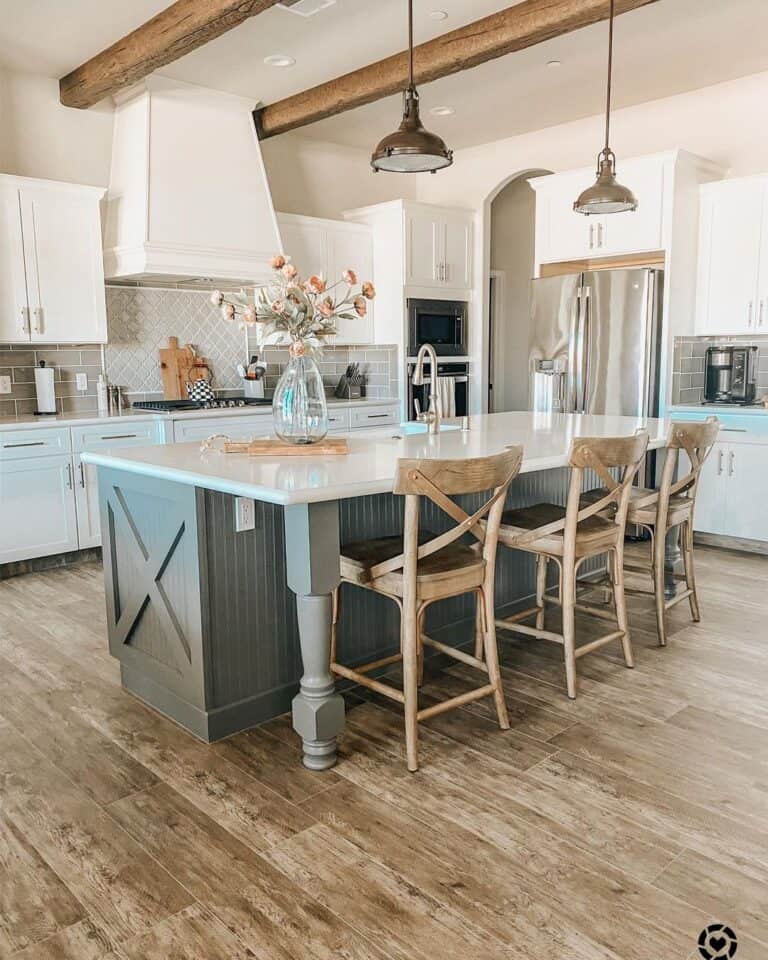Ingenious and Stylish Designs in Modern Legs For Kitchen Island Solutions
Ingenious and Stylish Designs in Modern Legs For Kitchen Island Solutions
Blog Article
Necessary Aspects to Consider When Picking Legs For Kitchen Area Island
Picking the suitable legs for a kitchen area island includes a mindful evaluation of multiple variables that can considerably influence both functionality and visual charm. As we explore these components, it ends up being clear that each choice can have far-reaching effects for the total kitchen experience.
Material Options
When picking legs for a cooking area island, recognizing the numerous product options is important for accomplishing both aesthetic appeal and architectural integrity (Legs For Kitchen Island). The option of material significantly influences not only the toughness of the island however also its total layout and performance
Wood is a preferred selection, providing heat and versatility. Strong woods, such as oak or maple, give strength and can be tarnished or repainted to match the cooking area decor. Steel legs, commonly made from stainless-steel or wrought iron, add a commercial and modern feel while making certain resilience and stability. These products are immune to put on and can support significant weight, making them perfect for larger islands.
One more option is crafted products, like MDF or plywood, which can be extra affordable while still providing a range of coatings. Nonetheless, they may not give the exact same level of security as strong wood or metal. Last but not least, materials such as acrylic or glass can produce a modern appearance, though they may call for added support to ensure security.
Ultimately, the option of material for cooking area island legs should align with the wanted capability and the overall style of the cooking area.
Design And Style

When thinking about style, the form and finish of the legs are crucial. Conical legs can provide a feeling of agility and sophistication, while thicker, much more durable legs can convey strength and security. Additionally, the coating-- be it painted, stained, or all-natural-- need to enhance the kitchen cabinetry and countertop products to produce a unified look.
Additionally, the design of the legs can also show personal preference. Custom or attractive legs, such as those including intricate carvings or special geometric forms, can function as centerpieces, adding character and individuality to the kitchen area. Eventually, the best option will certainly not just improve performance yet likewise raise the visual appeal, making the kitchen area island a standout feature of the home.
Elevation Factors To Consider
Choosing the appropriate elevation for kitchen island legs is crucial, as it straight influences both functionality and convenience. The standard height for a kitchen area island usually ranges from 36 to 42 inches, aligning with usual counter top elevations.

It is likewise vital to account for customers' elevations and choices. Customizing the height can make sure a comfy experience for all member of the family, making the cooking area island a much more practical and delightful room.
Weight Assistance
Making sure appropriate weight assistance for cooking area island legs is crucial for both safety and security and capability. The cooking area island often serves several functions, consisting of food prep work, dining, and added storage, requiring a robust support framework. When choosing legs, it is essential to think about the general weight ability required based upon the island's intended use and the products that will certainly be positioned on it.
The option of material for the legs plays a significant role in their weight-bearing capabilities. Solid timber, metal, and sturdy composites typically offer premium toughness contrasted to lighter materials. Additionally, the style of the legs-- whether they are right, tapered, or have a pedestal form-- can affect their ability to disperse weight effectively throughout the framework.
Additionally, the leg placement need to be tactically planned to improve stability. Legs placed at the corners or with a larger base can much better support much heavier tons. Always get in touch with the maker's specifications concerning load limitations to make sure that the legs can Our site sustain the designated weight without jeopardizing safety. In summary, selecting kitchen area island legs with sufficient weight assistance is vital for developing a secure and useful culinary room.
Setup and Upkeep
Proper installment and maintenance of kitchen area island legs are essential for making sure long life and stability. This typically involves protecting the legs to the island base utilizing suitable bolts, his response ensuring that the legs are level and lined up.
Once set up, regular upkeep is needed to maintain the honesty and look of the legs - Legs For Kitchen Island. For wood legs, regular cleansing with a wet towel and application of appropriate timber polish can prevent moisture damage and keep their finish. Steel legs may call for a mild cleansing option to get rid of grease and gunk, adhered to by a completely dry fabric to stop corrosion development
Furthermore, check the legs on a regular basis for signs of wear or damage, such as splits or loose joints. Tightening screws or screws as needed can additionally extend the life expectancy of the legs. By sticking to these installation and upkeep practices, house owners can ensure that their cooking area island continues to be tough and visually appealing for many years to find.
Verdict

Visual coherence is extremely important in picking the style and layout of legs for a kitchen island, as these elements significantly influence the total ambiance of the room. Tapered legs can offer a feeling of agility and elegance, while thicker, much more durable legs can convey strength and stability.Picking the proper elevation for cooking area island legs is crucial, as it straight influences both capability and convenience. In summary, selecting kitchen area island legs with sufficient weight support is vital for developing a functional and risk-free culinary area.
In final thought, choosing legs for a kitchen area island demands mindful factor to consider of different variables, including product alternatives, style, elevation, weight support, and installation.
Report this page